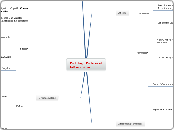Pathologic Patterns of Inflammation
Granulomatous
Caseating Granuloma
Syphilitic Gumma
TB nodule
Amorphous eosinophilic central zone
Develop necrosis in central area
Granuloma
Surrounded by collar of mononuclear leukocytes
Aggregation epithelioid macrophages
Foreign Body Granuloma
Eiptheloid and giant cells encompass the FB
Forms when material too large to be phagocytosed by a single macrophage
Immune Granuloma
Activation of T lymphocytes release cytokines
IFNy transforms macrophages into epithelioid and giant cells
IL-2 activates more T cells and perpetuates response
Macrophages engulf particles and present to T lymphocytes
Caused by insoluble particles that induce cell mediated immune response
Foreign Body Rxn
Beryliosis
Autoimmune Dz
Sarcoidosis
Crohn Dz
Specific Bacterial infxn
Brucellosis
Leprousy
TB
Predominant cell type is an activated macrophage with epithelial-like appearance
Distinct pattern of specific Chronic inflammation
Morphologic Patterns
Fibrinous Inflammation
Moephology
Few neutrophils present
Eosiniphilic meshwork of threads or amorphous coagulum
Associated with injury to membrane lined cavities
Peritonitis
Pericarditis
Occurs when exudate has a high plasma protein concentration
Suppurative Inflammation
Densely cellular exudates of neutrophils, cellular debris and edema
Pyogenic Bacteria
Bacterial meningitis
E.g. Acute appendicitis
Serous Inflammation
Commonly seen in burns and some viral infections (herpes)
Skin Blister
Accumulation of fluid with low plasma protein and cell content
Abcess
Surrounded by zone of
Vascular dilation
inflammatory infiltrate
Fibrin
Central region of necrotic leukocytes and cell debris
Liquifactive Necrosis
Can become Chronic
Neutrophils replaced by mononuclear leukocytes as chronic inflammation starts
Abscess encapsulated by granulation and fibrous tissue
Area of infection contained by fibrin deposition and processes of organization
Inflammation fails to destroy or remove pyogenic bacteria
Etiology
Deep seeding of pyogenic bactieria into tissue
form of suppurative inflammation
Cerebral Abcess
Lung Abcess
Localised collection of purulent inflammatory tissue
Ulcer
Morphology
Zone of granulation tissue beneath the slough
Acute inflammatory exudate of fibrin and neutrophils
Ulcerated surface covered in a layer of necrotic debris
Necrotic Slough
Pathogenesis
Occurs only if inflammatory necrotic area exist on/near the surface
Produced by sloughing of encrotic surface or tissue
Local excavation of the surface of an organ/tissue









